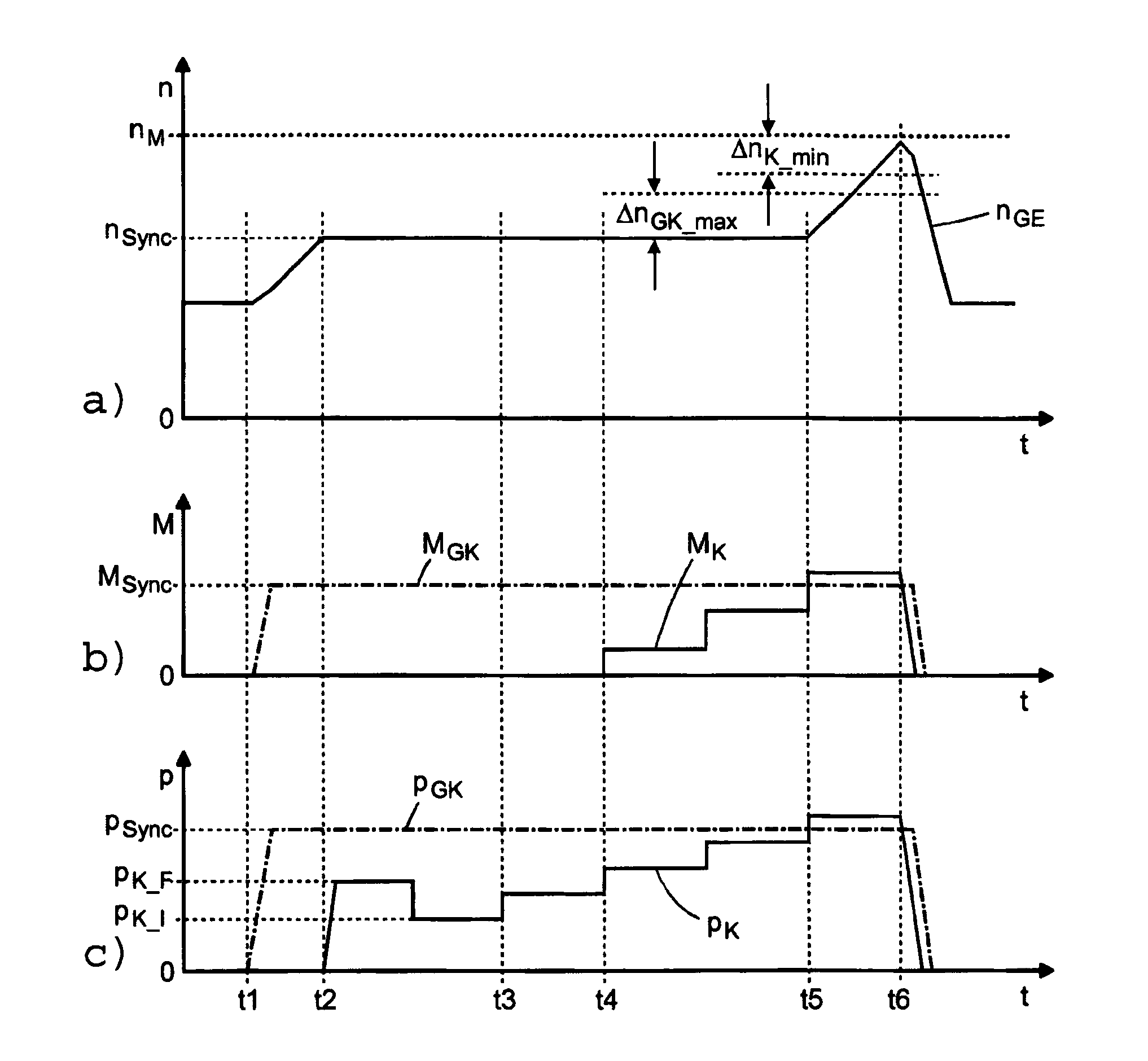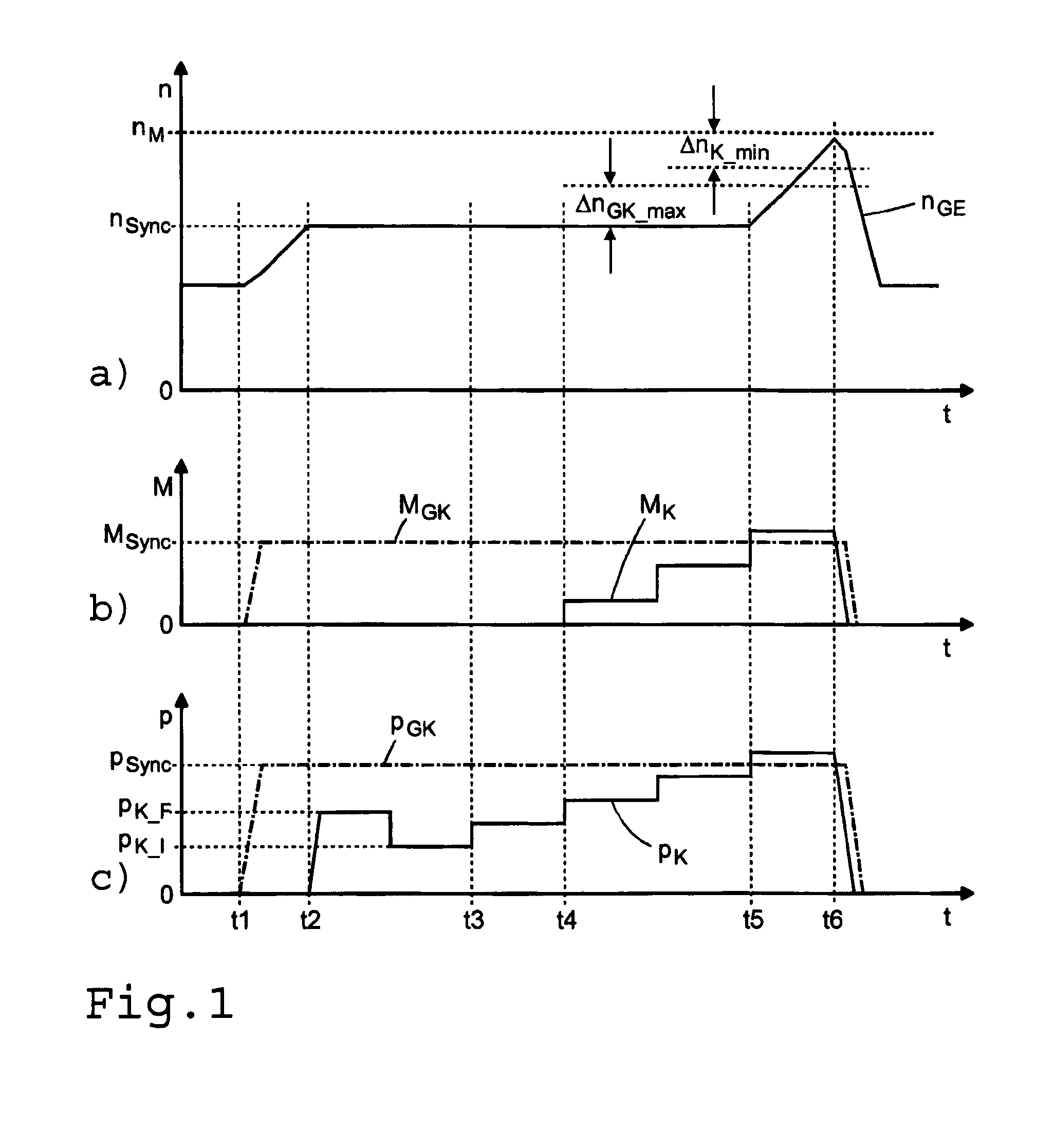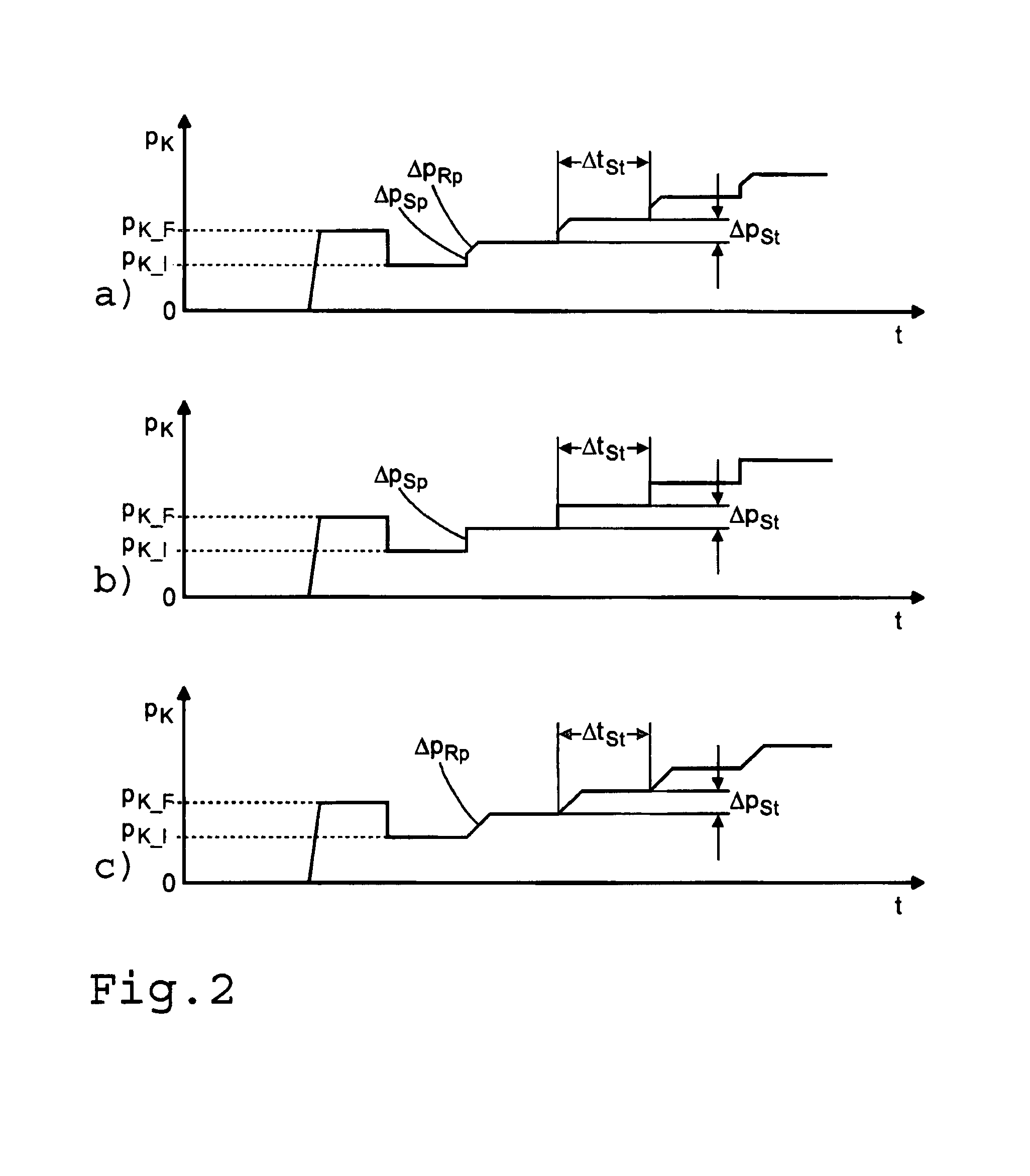Clutch characteristic adaption method for automatic dual clutch transmission
- Summary
- Abstract
- Description
- Claims
- Application Information
AI Technical Summary
Benefits of technology
Problems solved by technology
Method used
Image
Examples
Embodiment Construction
[0057]A known dual-clutch transmission 1 designed here, for example, as a six gear transmission in which the method of the invention for clutch characteristic curve adaptation can be used is depicted in a simplified manner in FIG. 4. The method of the invention, however, also functions in another dual-clutch transmission, for example in a dual-clutch transmission with seven or eight gears. The dual-clutch transmission 1 features a longer first input shaft 3, a shorter second input shaft 4 designed as a hollow shaft and placed coaxially above the first input shaft 3, a countershaft 5 positioned parallel to the two input shafts 3, 4, as well as an output shaft 6 positioned coaxially and axially adjacent to the first input shaft 3.
[0058]The first input shaft 3 is connectable by the engagement of respectively one associated gear clutch via the gear wheel sets of a first forward gear G1 and a third forward gear G3 with the countershaft 5, which is in a power-connection with the output sh...
PUM
 Login to View More
Login to View More Abstract
Description
Claims
Application Information
 Login to View More
Login to View More - R&D
- Intellectual Property
- Life Sciences
- Materials
- Tech Scout
- Unparalleled Data Quality
- Higher Quality Content
- 60% Fewer Hallucinations
Browse by: Latest US Patents, China's latest patents, Technical Efficacy Thesaurus, Application Domain, Technology Topic, Popular Technical Reports.
© 2025 PatSnap. All rights reserved.Legal|Privacy policy|Modern Slavery Act Transparency Statement|Sitemap|About US| Contact US: help@patsnap.com



